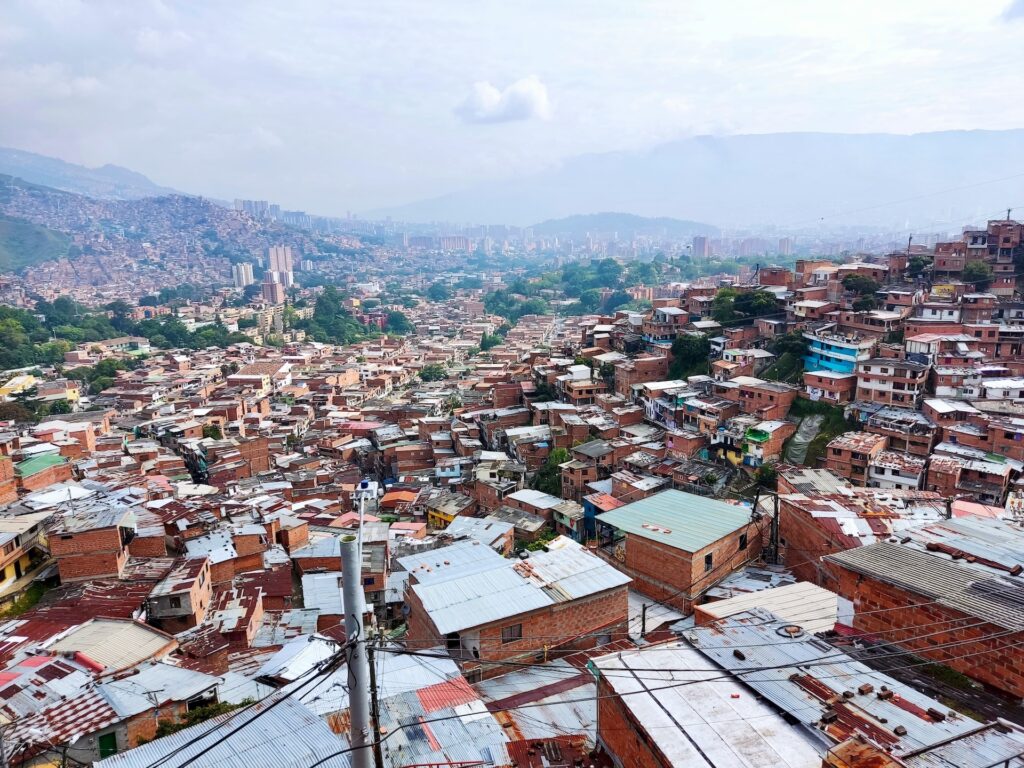Hi there,
Initially we thought of spending a month in Medellín since everyone said that it was the best city of Colombia. In fact, a friend who is from Verona went to live there and I thought “Well, if he left Verona and Italy to go to Medellín, it’s because it is beautiful”.
We arrived at the airport and the first thing I noticed is that taxis/Uber were much more expensive than in Bogotá. A 30-minute ride from the airport to the accommodation cost us 90,000 COP ($23).
At first glance, Medellín looks greener than Bogotá. Diego was amazed because the Poblado area had many trees, and we could breathe a little better than in Bogotá.
Poblado is the only good and fairly safe area in Medellín and is where the upper-class people live. You don’t feel so insecure, but still, you see homelessness everywhere. Here we were not so afraid to go out to the supermarket in the afternoon, because in Bogotá after the sun went down, you couldn’t go out.
The first day we went to Pueblito Paisa and going in the taxi we realized that there was horrible traffic, much worse than in Bogotá. Pueblito Paisa consists of 4 painted houses on top of a mountain with some souvenir shops and restaurants. Neither cultural value, nor anything.
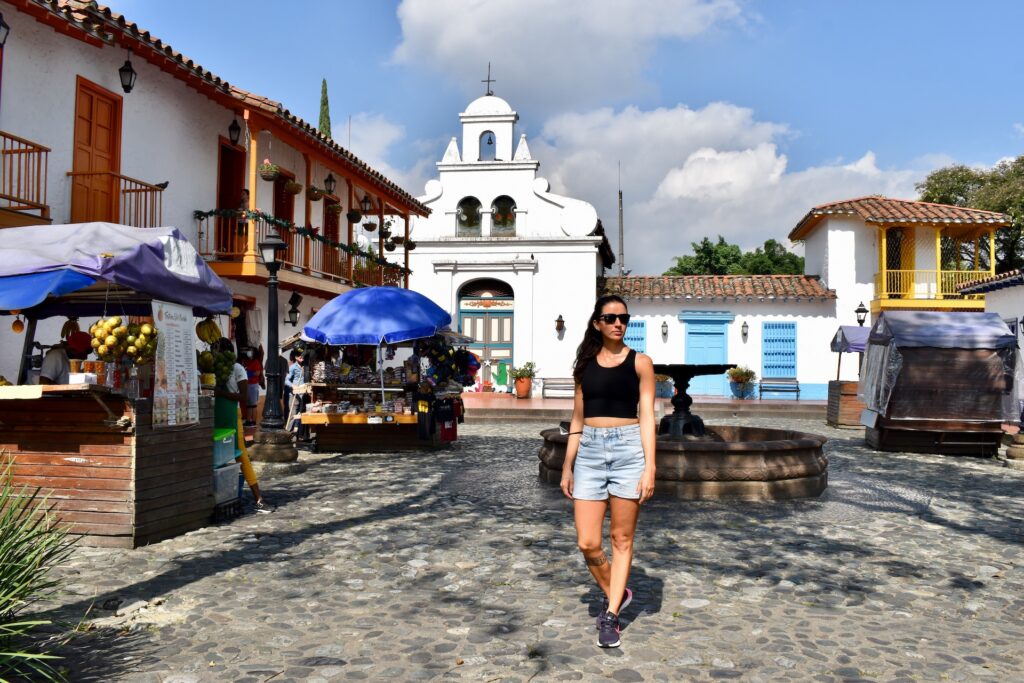
From there we walked downtown, and the pollution is as horrible as in Bogotá. Only in Poblado you don’t feel it so much because there are trees.
Downtown is the ugliest, most decadent thing you can imagine. The streets were dirty and full of potholes. Almost the entire center is made up of cheap clothing stores and there are hundreds of street vendors shouting.
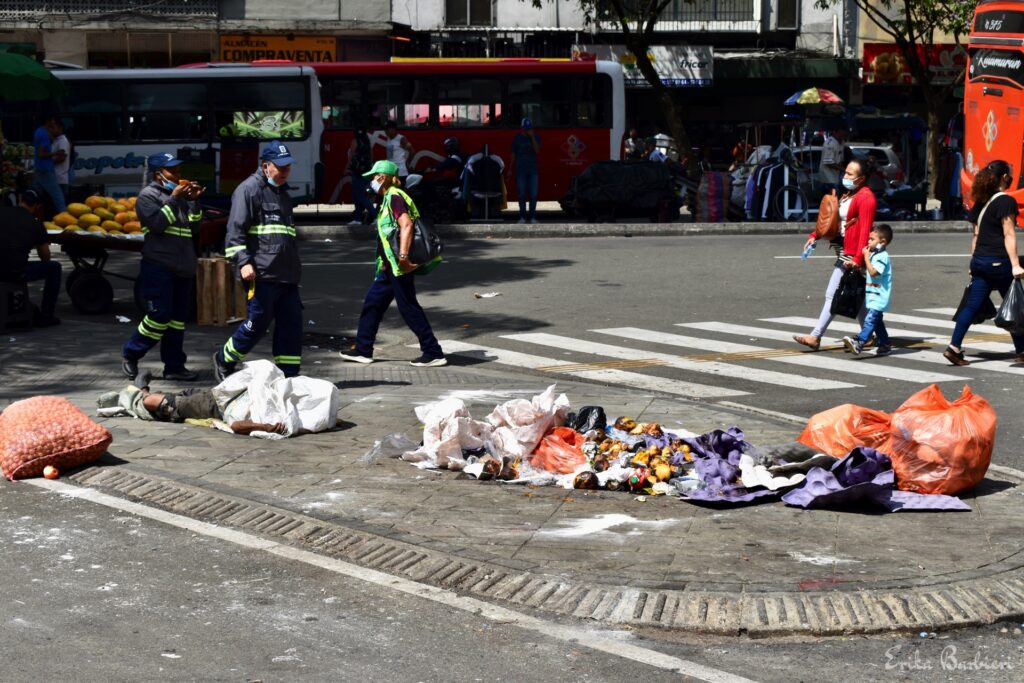
Botero Square, which is one of the most iconic places in the city, is crazy with noise, street vendors and garbage. In addition, many homeless people lying half naked on the floor. The truth is that it was a Dantesque spectacle, and the tourists took photos with Botero’s sculptures, totally indifferent to the misery that surrounded them.
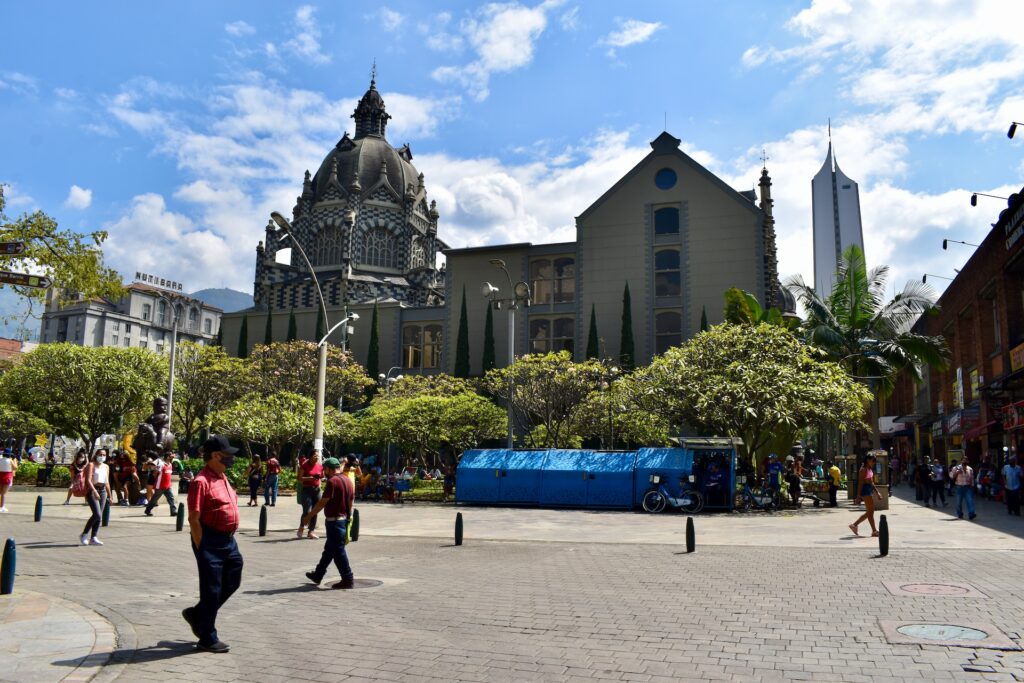
The center of Medellín is extremely insecure and it is scary to walk there. In addition, there are many crazy or drugged people who go around fighting or yelling and you don’t know if at any moment they come and do something to you.
Apart from Plaza de Botero, there are two more churches that are supposedly touristy and that’s it. After seeing how little there was, we asked for a taxi, and we got out of there terrified.
The next day we went to see Comuna 13, which used to be the most dangerous slum in Medellín and is now touristic because supposedly it is no longer unsafe. When you arrive, the tour guides start harassing you to give you a tour.
The shacks are painted in colors and there is graffiti everywhere. You go up a series of stairs and arrive at a kind of lookout where there are police. You can’t know all the territory that is covered by slum.
There is a cement path of a kilometer where it is “safe” to walk, but even so, we saw a group of young people consuming drugs on a corner.
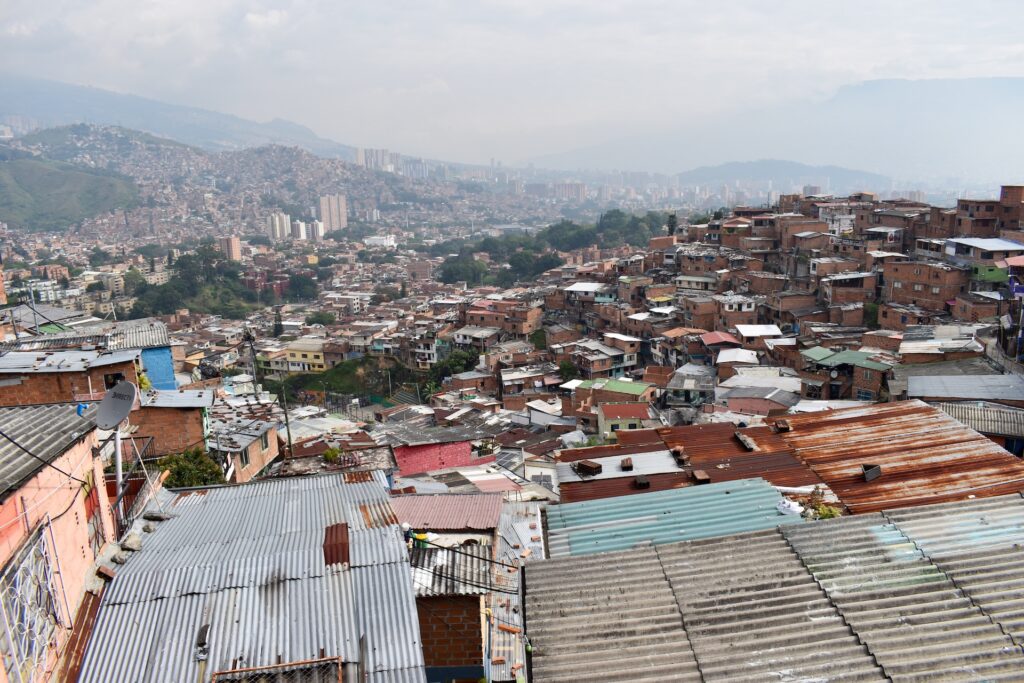
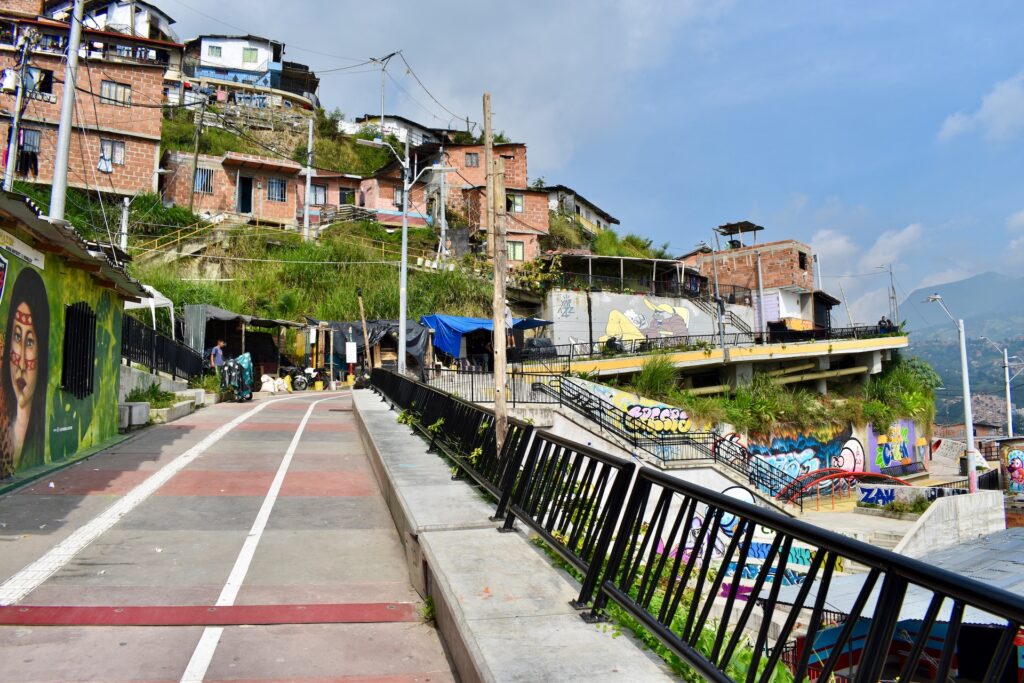
You can’t imagine how bad we felt to be there. Beyond the constant feeling of insecurity, I can’t understand how somebody can do tourism with poverty and misery. The fact that one goes as a tourist to take photos, seems to me a mockery of those poor people.
At 11 am the music was already starting to play at full volume in all the souvenir shops and the tourist groups began to arrive in masse.
The next day we went to visit Guatapé.
Here I make a parenthesis to tell you a little about how this place works. In Medellín, Guatapé is the only fairly decent place you have, which is why all the inhabitants of this city go to visit on weekends. By car it takes an hour and a half if there is no traffic, but in Medellín there is always traffic.
A taxi driver who wanted to take us and spend the day with us for 280,000 COP ($71) told us that it was better to go during the week because on the weekend it could take 5 hours to go and 5 hours to return.
In the end, we decided to go with a normal taxi since we didn’t want anyone waiting for us and because we weren’t going to spend the whole day there. As soon as we got into the taxi, the guy started asking who we were going back with “since the logical thing was to return with the same person”; The man spent the whole hour and a half talking nonstop saying that the trip “had been very cheap for us”, that we should go back with him, how much he paid for the toll and even a story that he had supposedly been shot in the spine when he was in the military in the United States.
Truly unbearable. We told him that we would return with him, and that in the afternoon we would let him know where he had to pick us up, only for him to leave us alone and go away.
Peñón de Guatapé is a stone that is climbed by stairs. It is privately managed, and you must pay 20,000 COP ($5) to go up. At the top there is only a restaurant and a souvenir shop, the workers of both spend all their time yelling at people to buy; In addition, both had the music at full volume.
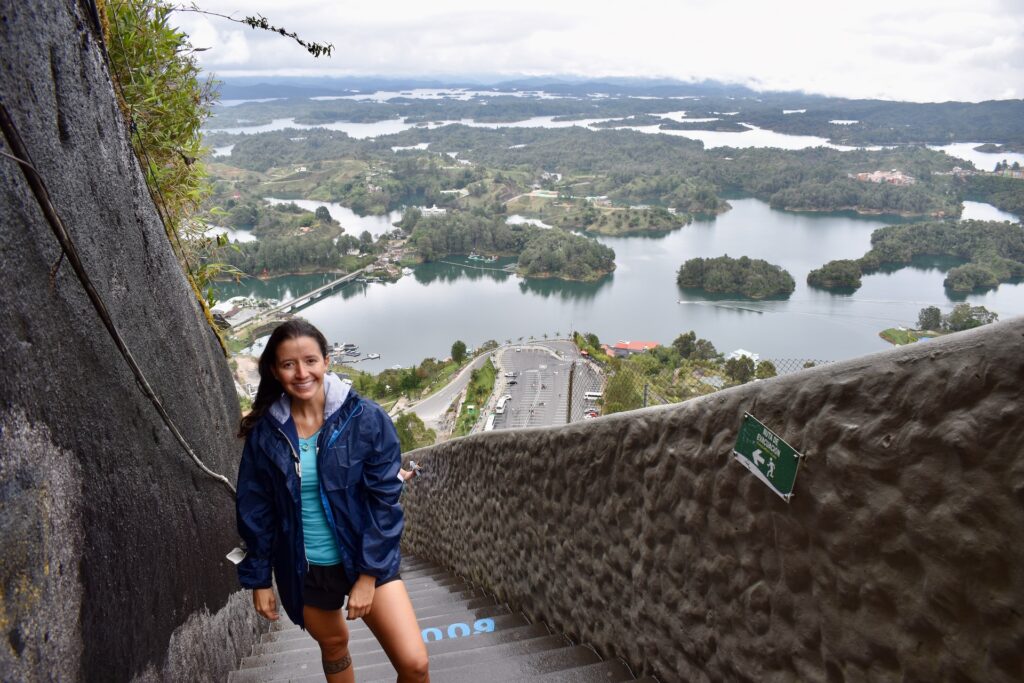
We took a couple of photos of the views and went down. As you can see, another place with zero cultural interest.
The entire area around the rock is also full of restaurants and souvenir shops, each one with a different music at full volume; In addition, outside the establishments are the vendors shouting.
The area is beautiful and green, but when you walk and look closely, you find that everything is full of garbage.
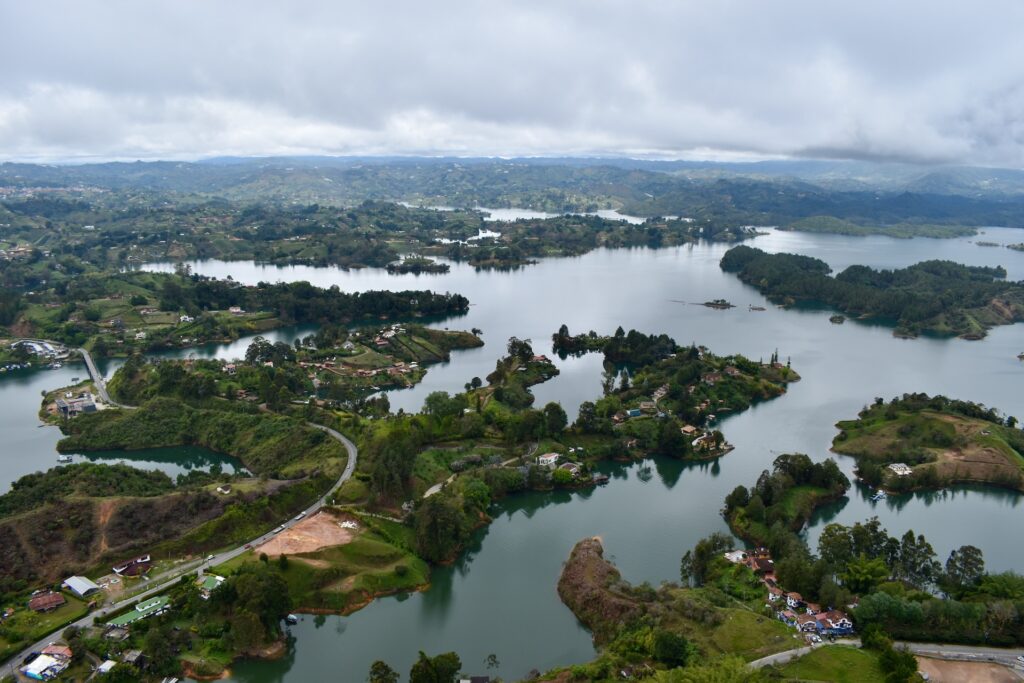
We went to the town of Guatapé and there is no sidewalk, so it was a 40-minute walk along the edge of the road.
The town of Guatapé is made up of some colorfully painted streets with restaurants and souvenir shops, nothing more.
At 11:30 am we took a bus to return to Medellín that left us at the bus station and from there we took an Uber to our accommodation. It took us 3h30. Imagine how long it would have taken if we returned in the afternoon.
The bus station area was surrounded by a slum, so it was also quite scary to be there.
At some point while we were organizing the stay in Colombia, I thought of spending a month in Guatapé and I ruled it out because the accommodations were shacks that cost more than $1000 a month. Goodness.
The last day we were in Medellín we stayed in the accommodation resting because I didn’t feel like going out to see more poverty.
Surely the post seems pessimistic, but unfortunately it is the reality. I thought that Medellín would be different since a lot of people say it is the best of Colombia, but I found the same decadence. In fact, the center of Bogotá that I had not liked, went up in category after seeing what Medellín is like.
If we talk about good areas, which is where tourists stay, The one in Medellín is better than the one in Bogotá because it is greener and perhaps has a little less poverty.
I honestly don’t understand how there are people who loved Medellín. The center is a disaster of garbage, noise and indigence, the sky is gray from pollution, tourism consists of going to the slums to take photos of shacks or getting on the cable car to go over the poorest areas and although those who live there say otherwise, it is just as insecure as the rest of Colombia.
After seeing what Medellín really is, we felt grateful for the problem we had at the Affinity Aparta Hotel and that we didn’t have to spend a month there, a week was already too much.
Here is the link to my YouTube channel:
I also leave you the link to my gallery:

